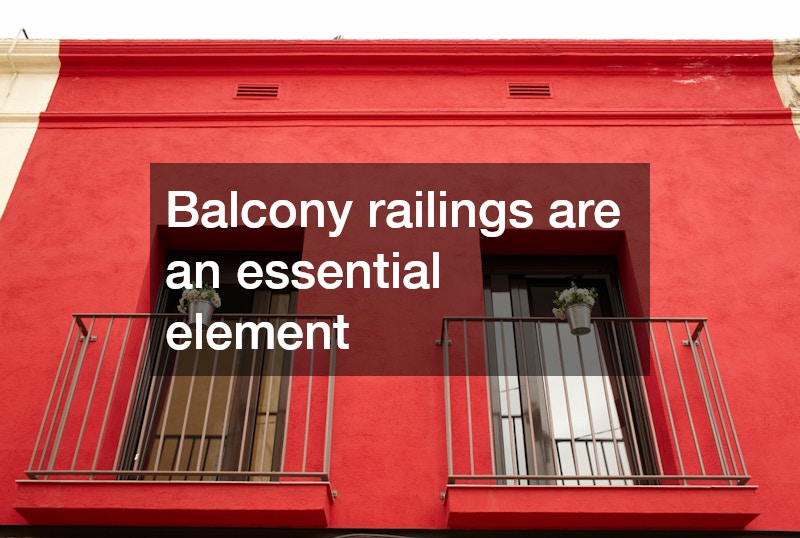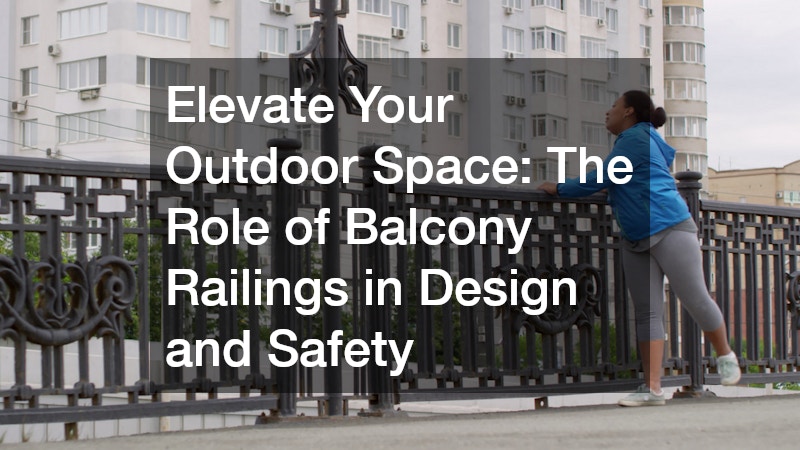Balcony railings are more than just structural components — they’re essential features that influence the overall look, feel, and function of an outdoor space. Whether attached to an apartment, condominium, or a home, balcony railings serve both aesthetic and practical purposes. From enhancing architectural style to ensuring the safety of residents, the right railing design can make a significant impact.
Safety First: The Fundamental Purpose of Balcony Railings
The primary purpose of balcony railings is safety. They act as a protective barrier, preventing accidental falls and creating a secure enclosure — especially important in multi-level dwellings or high-rise buildings. For families with children or pets, railing height and spacing between balusters become essential safety features. Modern building codes often dictate specifications for balcony railings, such as minimum height and maximum gap size, to ensure compliance and security.
In addition to safety, many railing systems are built to withstand the elements. Whether exposed to sun, rain, wind, or snow, outdoor railings need to maintain their strength and integrity over time. That’s why materials like stainless steel, aluminum, treated wood, and tempered glass are commonly used in their construction.
Aesthetic Appeal: Complementing the Architecture
Beyond function, balcony railings can enhance the visual appeal of a building. The style and material chosen can either complement the existing architecture or create an eye-catching contrast. For traditional homes, wrought iron or wood railings may add a sense of timelessness and warmth. For modern or minimalist properties, glass panels or cable rail systems offer clean lines and an unobstructed view.
Color and finish also play a major role in design. Powder-coated metal finishes, natural wood stains, and frosted or tinted glass can be matched to the exterior palette of a home. Custom railing designs — including laser-cut metal patterns or mixed-material installations — allow homeowners to make a bold, personalised statement.
When thoughtfully designed, balcony railings can become an extension of interior style, blurring the lines between indoor and outdoor living. By aligning materials and finishes with those used inside the home, it’s possible to create a seamless transition from living room to balcony.
Material Options: Durability Meets Design
There are several material options available for balcony railings, each with its own benefits:
-
Metal (Aluminum, Steel, Wrought Iron): Strong, low-maintenance, and highly customizable. Metal railings can be powder-coated in a variety of colors and textures for extra durability and visual interest.
-
Glass: Ideal for maintaining visibility and openness. Tempered glass panels are safe, stylish, and perfect for scenic locations where the view is a priority.
-
Wood: A classic choice that brings warmth and a natural touch. Best for covered or semi-protected balconies, wood requires periodic maintenance but offers timeless charm.
-
Cable Rail Systems: Contemporary and minimalist, these systems use tensioned cables between posts to create a clean and open look.
-
Composite Materials: Designed to mimic the look of wood without the maintenance. Composite railings are weather-resistant and long-lasting.
The choice of material often depends on climate, exposure, and the level of upkeep a homeowner is comfortable with. Each option offers its own unique combination of strength, style, and longevity.
Installation Considerations
Professional installation of balcony railings ensures not only a polished look but also adherence to safety codes and structural requirements. Improperly installed railings can become safety hazards over time, especially when subjected to weather-related stress.
It’s also important to consider anchoring and structural support. Depending on the weight and material of the railing, appropriate fasteners, mounting brackets, and post bases must be used to ensure stability. Additionally, any drainage or waterproofing systems on the balcony should be accounted for during installation to avoid long-term issues.
Low Maintenance, High Impact
While balcony railings are built for strength and function, many modern designs also prioritise ease of maintenance. Powder-coated metals resist rust and fading, while glass panels can be easily cleaned with a standard window cleaner. Composite and vinyl systems require little more than occasional washing to keep their appearance fresh.
This low-maintenance advantage makes them ideal for busy homeowners or rental properties where ongoing upkeep may be limited. Selecting materials and finishes that naturally resist wear, fading, and corrosion extends the life of the railing and maintains the balcony’s overall appeal.
Balcony railings are an essential element of both form and function in any multi-story residence. They provide safety, contribute to architectural beauty, and create a comfortable outdoor environment. With today’s wide range of materials and design options, it’s easier than ever to find a railing solution that aligns with your style, enhances curb appeal, and ensures long-term durability.
Whether you prefer the bold statement of wrought iron, the clean transparency of glass, or the natural feel of wood, the right railing design can transform your balcony into a refined and inviting space. Ultimately, balcony railings serve as the perfect blend of practicality and design — elevating both the appearance and experience of your outdoor space.

